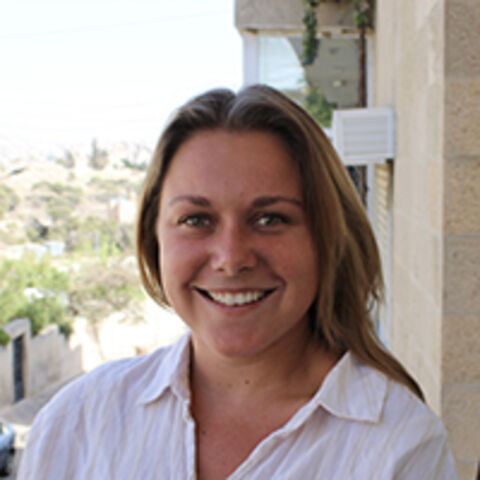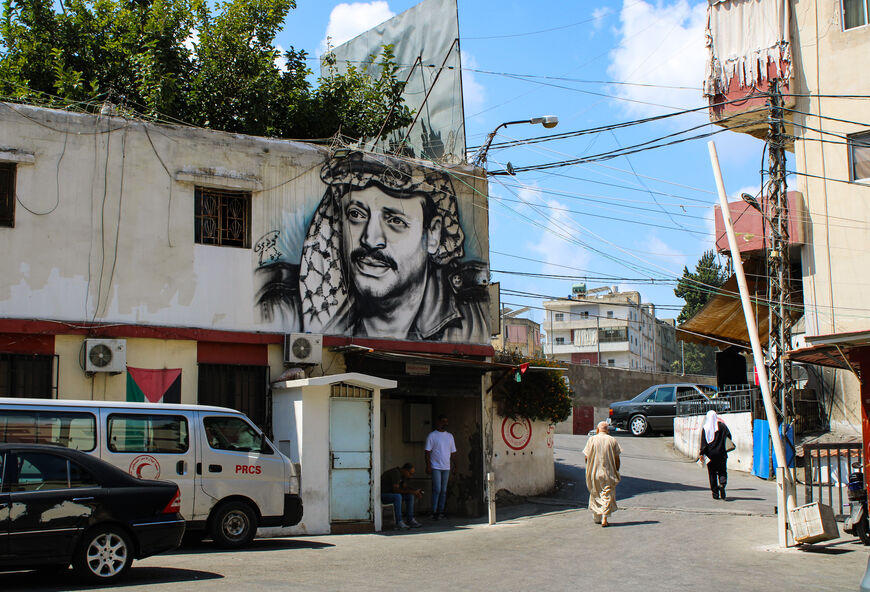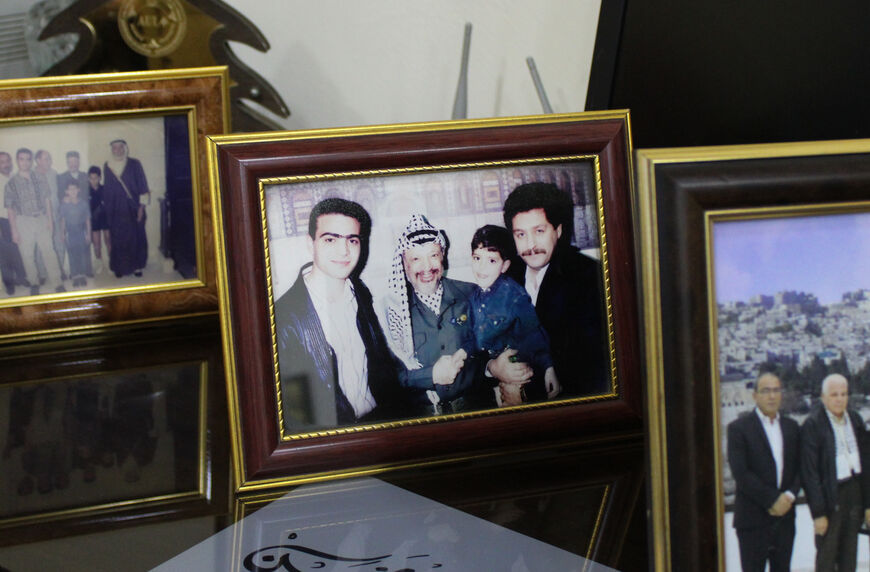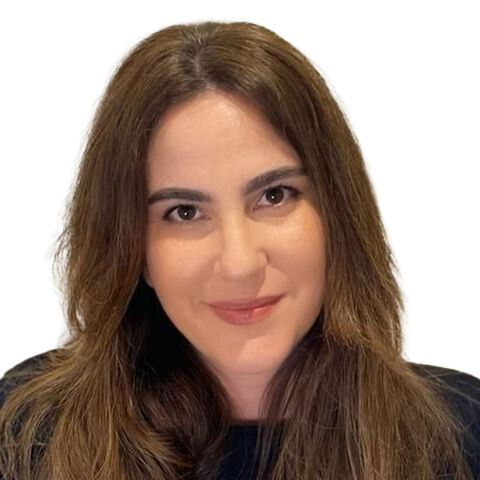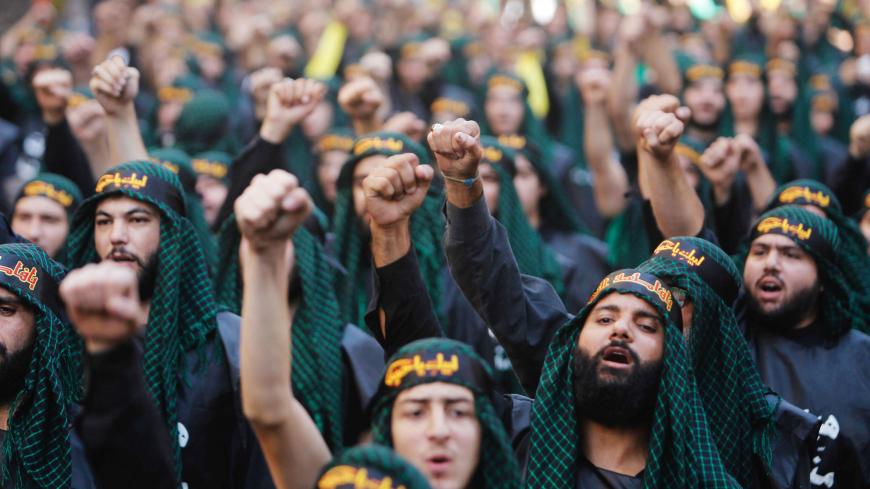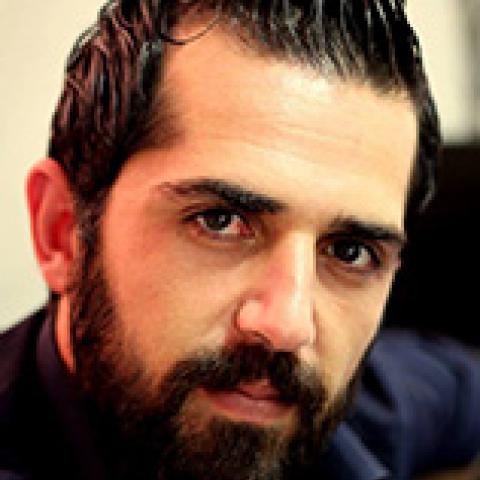As Gaza reels, many in Lebanon’s Palestinian camps 'ready to sacrifice'
Ain al-Hilweh camp for Palestinian refugees in Lebanon is witnessing growing popularity for Hamas, which has joined Hezbollah in launching attacks against Israel from the Lebanese border.

SIDON, Lebanon — Portraits of late Palestinian leader Yasser Arafat adorn the walls of Al-Hamshari Hospital in the southern Lebanese city of Sidon, and a large floor-mounted map of the Palestinian flag greets its patients and visitors.
Many patients come from the nearby Ain al-Hilweh camp, the largest Palestinian refugee camp in the country, relying on the discounted health-care services the hospital provides, thanks to the support of the Palestinian Authority.
Down the hall, the office of Dr. Riad Abu al-Ainain is bustling. Ainain is not just the hospital’s director but also a leader of the Palestinian movement Fatah in Lebanon. Fatah is the dominant party of the PA.
“In what respect I can serve our people, I will. If I will serve in Fatah, I will. If I have to serve in a hospital, I will,” Ainain told Al-Monitor from his office.
He is one of many leaders of various so-called Palestinian resistance movements operating from Lebanon. Among them are leaders of Hamas and other Palestinian armed groups that took part in Hamas’ Oct. 7 attack on Israel.
In Lebanon, Hamas and the Palestinian Islamic Jihad have joined forces with the Lebanese militant group Hezbollah under the umbrella of the Iran-led "axis of resistance" against Israel. In cooperation with Hezbollah, the groups have attacked Israel from Lebanon’s southern border, where clashes have been ongoing since Oct. 8.
Unlike Hamas and Islamic Jihad, Fatah has favored diplomacy with Israel over armed resistance since the 2000s, and has not announced its involvement in the fight against Israel at the Lebanese border.
However, according to Ainain, Fatah would join the war efforts in Lebanon’s south “when the time comes.” “If Israel invades Lebanon, we [Fatah in Lebanon] will announce that we would be the first front to defend the Lebanese and the Palestinian people,” he added.
Assassination campaign
Israel has intensified its campaign to assassinate leaders involved in the Palestinian armed movements in Lebanon. Last month, Israel stepped up its attacks on Sidon, striking the southern city on three separate occasions in attempts to assassinate Palestinian leaders who operate — and have attracted considerable support bases — within Ain al-Hilweh camp.
Among the two leaders killed in the August assassinations was Khalil al-Maqdah, the first Fatah member to be assassinated since the Gaza war began. He was a senior commander of the Fatah military wing — Al-Aqsa Martyrs Brigades — and the brother of Mounir al-Maqdah, who heads the brigades from Ain-Hilweh.
Israel claims that the Maqdah brothers were acting “on behalf of the Hezbollah terrorist organization and Iran's Islamic Revolutionary Guard Corps,” as well as being involved in weapons trafficking to the occupied West Bank.
However, Ainain denied the accusations that Al-Aqsa Martyrs Brigades was smuggling weapons to the West Bank and stated that the group is “only active in Palestine [West Bank and Gaza], not anywhere else.”
Hasan Kotob, a Sidon-based political analyst and executive manager of the Lebanese Center for Research and Consulting, told Al-Monitor that Maqdah’s assassination was “an active and real threat to all Palestinian factions not to intervene or cooperate with Iran through Hezbollah.”
Fatah divided
Conflicts over Fatah’s approach have emerged within the movement, pushing certain groups to splinter in favor of armed resistance, Souhayb Jawhar, a Lebanese researcher of Islamic political movements, told Al-Monitor.
Jawhar said that these Palestinian factions in favor of armed resistance have become more popular in Palestinian refugee camps, including in Ain al-Hilweh.
Al-Aqsa Martyrs Brigades spoke to the divisions within Fatah in a statement released after the assassination of Maqdah, saying that he was “one of the most prominent innovators and planners of the launch of Al-Aqsa Martyrs Brigades in the West Bank … at a time when many Fatah leaders abandoned the sons of the brigades in the West Bank.”
Meanwhile, Arab countries are urging PA President and Fatah leader Mahmoud Abbas to find strategies to unite the divided Fatah movement, under the assumption the PA may eventually play a role in governing the Gaza Strip.
In an August meeting with Turkish legislators, Abbas promised to go to Gaza and told the legislators, “It’s either victory or martyrdom,” reflecting a shift in his usual pacifist tone.
“We have to differentiate between Fatah and the PA,” Ainain noted in regard to Fatah's stance on resistance. “We [Fatah] are a party and we believe in the liberation of all our lands, by all means,” referring to “negotiations or escalation or by military means. We want our land to be free.”
Hamas rises in Lebanon
Israel’s targeting of the Palestinian groups in Lebanon has “failed to achieve its goals … because Hamas’ activity is ongoing, is strong and is growing,” Jawhar said.
Hamas’ popularity has surged in Lebanon since Oct. 7 and recruitment for its military wing — Izz ad-Din al-Qassam Brigades — is on the rise, Inkstick Media and The New York Times reported this year. In December, Hamas launched what it called Al-Aqsa Flood Vanguards, a unit to attract youths to join the movement, Jawhar noted.
“If you enter any Palestinian camp or Sunni [Muslim] popular area, you will find a significant Hamas presence,” he added.
Outside Ain al-Hilweh, posters of al-Qassam Brigades’ spokesperson Abu Obeida are scattered throughout Palestinian refugee camps.
“In Ain al-Hilweh and in every [Palestinian] camp, emotions and spirits are very high,” Kotob said. "Palestinians started believing in Hamas. They believe this is the real resistance. [Meanwhile] the Fatah movement is aging. They’re not recruiting youths."
“Hamas has become the most attractive to the youth and new generations in the camps,” Jawhar said, while noting that “the historical supporters of Fatah in Ain al-Hilweh and other camps are still strong and important.”
'Ready to sacrifice'
“We adore Hamas,” Abdullah Dahoud, 17, told Al-Monitor. “Hamas advises us, respects us and makes us more disciplined.” Dahoud’s two friends, sitting beside him, nod in agreement.
The three young men live in Ain al-Hilweh. Like many others in the camp, their families fled to Lebanon in 1948, when Zionist militias displaced hundreds of thousands of Palestinians. Dahoud said his ancestors hail from Tiberias, a city in what is today northern Israel.
Although Dahoud said he wishes to return to his homeland, he still speaks highly of Ain al-Hilweh that is the place of his birth and childhood. “They often say that Ain al-Hilweh has many risks and problems, but our community is the best in the world because of the Islamic learning and teaching, and because we have a lot of beautiful and nice people who love to live in peace,” he said.
Dahoud showed photos on his phone of daily life in Ain al-Hilweh — colorful images of children playing, a man baking manakeesh (flatbread) and a bustling barber shop. Al-Monitor was unable to visit the camp due to restrictions on media permits.
Dahoud said that he feels Hamas helps keep the peace in the camp, by reducing the growing presence of various Islamist groups, which he said were the “terrorists.” Last year, clashes erupted in Ain al-Hilweh after Fatah accused Islamist groups of killing one of their military generals. “The most peaceful [Palestinian faction in the camp] is Hamas,” Dahoud noted.
Jawhar commented that the clashes “revealed the presence” of emerging Salafist-jihadist groups, affiliated with al-Qaeda or the Islamic State.
As for the resistance, one of Dahoud’s friends, Sultan Mousa, 16, said, “Nobody likes death and killing, but they [Israel] assaulted us. … We are defending land because we want it back.”
“My family and I are ready to sacrifice ourselves for the resistance. People should sacrifice for the people after us — for the next generation and for the children,” Dahoud added.
'Olive tree in one hand and weapon in the other'
Ainain turned to a framed photo on his desk at the hospital. In the photo, young Ainain poses next to Yasser Arafat, who wears his black-and-white kaffiyeh.
It was Arafat — who moved in and out of Lebanon during the 1970s and 1980s — who signed the 1969 Cairo Agreement with the Lebanese parliament, which set the infrastructure for Palestinian groups to operate from Lebanese soil.
“I don’t remember a year since 1948 that our people had a break from war or blood,” Ainain said, “Even if there was no war, Israeli airplanes would come and bomb our camps. In the West Bank and Gaza Strip, there is no break.”
“We are not in love to see blood, whether from our side or the other side. If they force us to use a weapon, we have to use it to defend our people, to liberate our land and to prevent the suffering of our children,” he concluded. “We are raising — as Arafat raised — the olive tree in one hand and the weapon in the other.”


